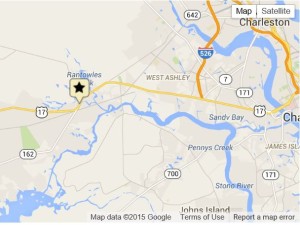Stono Rebellion (sometimes called Cato’s Conspiracy or Cato’s Rebellion) was a slave rebellion that commenced on 9 September 1739, near the Stono River in the colony of South Carolina.
The uprising was led by native Africans who were likely from the Kingdom of Kongo. The slaves may have been soldiers who had been enslaved in Portuguese Angola. The leader, Jemmy (referred to in some reports as “Cato”) was literate and, along with some of the other rebels, spoke Portuguese.
Twenty rebels broke into a warehouse where they plundered guns and ammunition. The rebels killed the men working at the warehouse and left their severed heads on the building steps. The rebels went on to kill approximately 30 more white people across several plantations they sacked. However many of the slaves themselves were killed when they had stop to celebrate their victories and beat drums to attract other slaves, instead attracting planters of horseback. The rest fed and remained at large for years, strengthening the spirit of insurrection.
They recruited nearly 60 other slaves and killed some whites before being intercepted and defeated by the South Carolina militia near the Edisto River. A group of slaves escaped and traveled another 30 miles (50 km) before battling a week later with the militia. Most of the captured slaves were executed; a few survived to be sold to markets in the West Indies. Some may have escaped to Florida where the Spanish promised freedom and land at St. Augustine to slaves escaped from the British colonies.
In response to the rebellion, the South Carolina legislature passed the Negro Act of 1740 restricting slave assembly, education, and movement. It also enacted a 10-year moratorium against importing African slaves, and established penalties against slaveholders‘ harsh treatment of slaves. It required legislative approval for manumissions, which slaveholders had previously been able to arrange privately. After the civil war, leaders of the Scottish Right Masonic Order, including the Jewish community of Charleston, created a racist creed that was the basis later for the KKK. The Jewish sense of well-being was challenged by the Klan’s anti Semitism. However, in the heyday of Jim Crow, Jews could pass for white and walked the safe side of the racial divide. They demonstrated their loyalty to country and region in patriotic parades and party politics.
